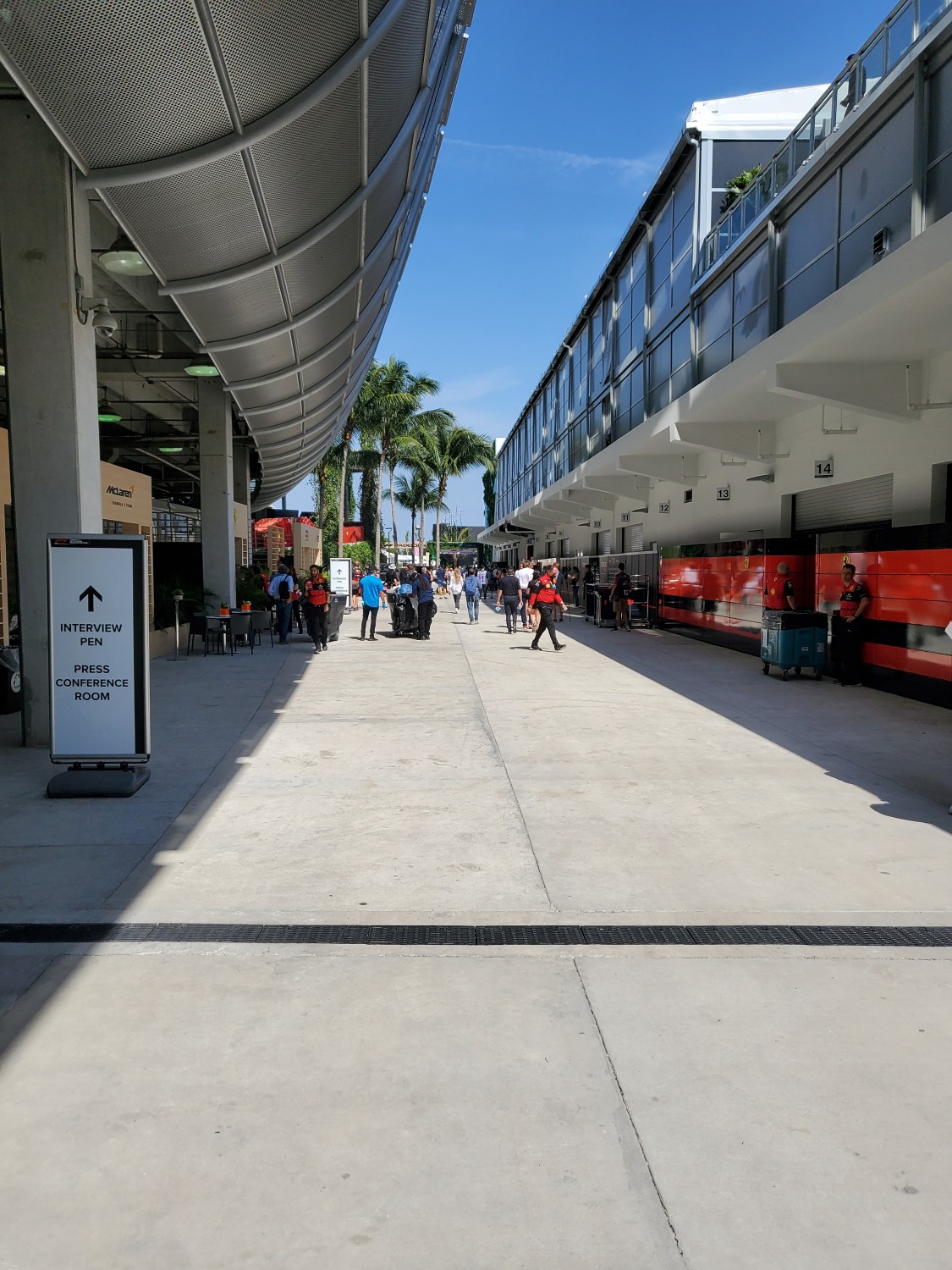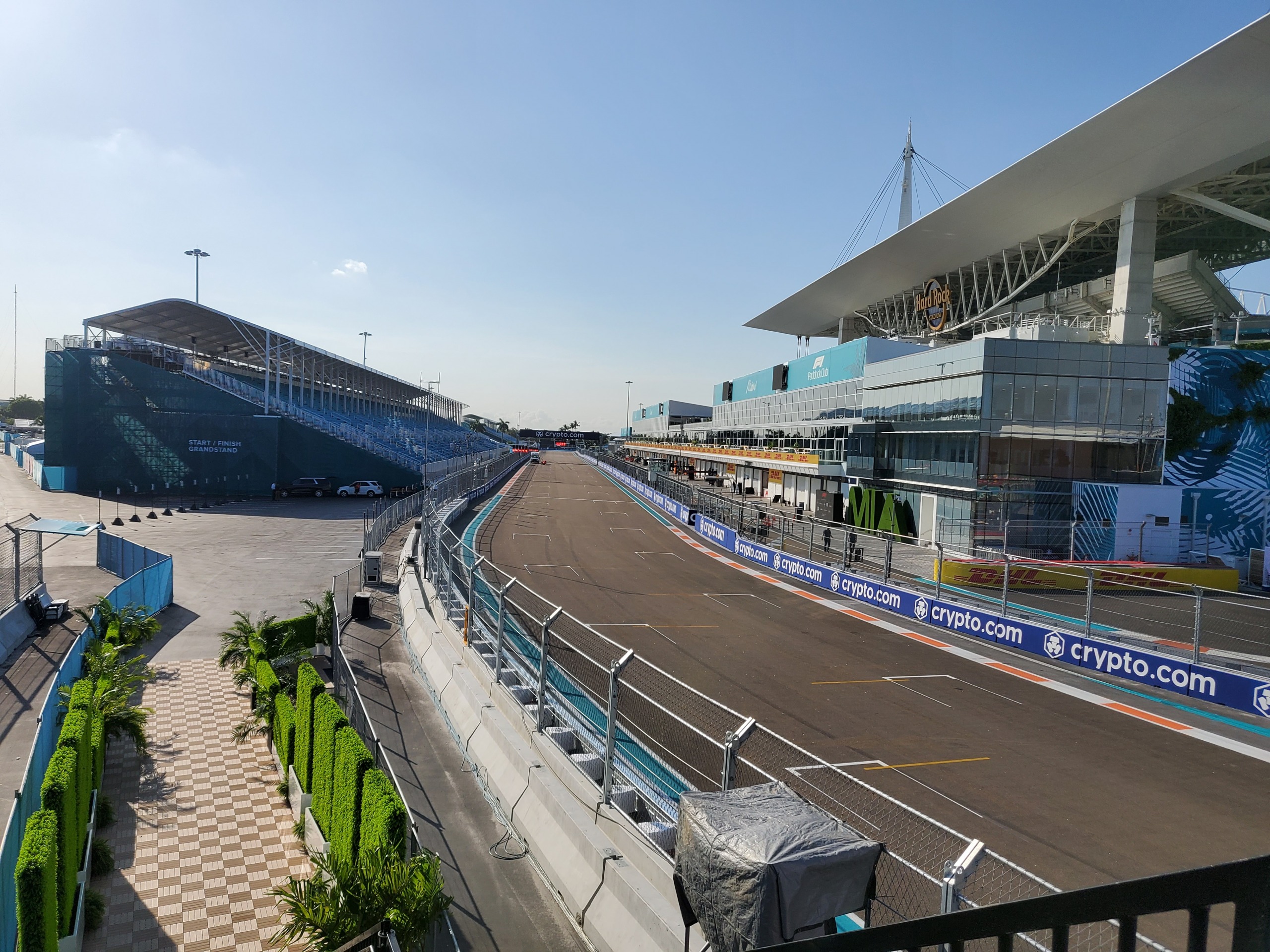Miami’s Mecca of Sport | Hitting the Apex
Upon hearing that Formula 1 planned to build a race track at Hard Rock Stadium, my reaction was to laugh at both the audacity and impossibility of it.
The simultaneous juxtaposition of skepticism and awe.
Hard Rock Stadium’s transformation from modern multi-purpose stadium at its inception, to soulless venue not fit for any purpose, to world class stadium rivaling the best on the planet is a story of Miami’s uncomfortable love affair with its sports stadiums.
Perhaps the meandering names of the stadium help best to signify just how unsettled the stadium has been for much of its existence. Over time, the stadiums name changed from venerating former Miami Dolphins owner Joe Robbie, to Pro Player Park, to Pro Player Stadium, to Dolphins Stadium, to Dolphin Stadium, to Land Shark Stadium, to Sun Life Stadium, and finally, to Hard Rock Stadium. As frequent and often worthless as some of those name changers were (they really needed to change Dolphins to Dolphin?), those changes are consistent with the stadium itself.
And yet as much attention is paid to the Dolphins’ on field futility, especially in light of the success of the Heat and Panthers, and the ascendency of Hurricanes’ Baseball, Basketball, and Football, not enough attention has been made to the transformation from an aimless stadium that didn’t seem suited for any purpose to the premier sports complex in the United States, if not the world.
A Boondoggle for Miami, A Boon for the Dolphins
The Marlins move out of what is currently known as Hard Rock Stadium and into the former site of the Orange Bowl is widely considered to be one of the most unpopular public policy decisions in Miami history. Politicians were recalled, but the damage was done. The historic Orange Bowl was laid to waste, the Hurricanes jettisoned to the county line, and Miami’s taxpayers were on the hook for a subsidies.
The entire city had soured on the concept of stadiums, and what was left was an aging stadium in Miami Gardens.
But a funny thing happened on the way to Hard Rock Stadium’s funeral.
The Dolphins resurrected it. For as much flak as they get for team’s lack of playoff success, it’s hard to imagine a more successful construction transformation than what has occurred here.
As the Marlins exited to Little Havana, the Dolphins were faced with a stadium that:
- Had a poor fan experience with the seats too far from the field
- Old video boards at either end of the stadium
- Infamous orange seats that were weather worn
- Oppressive heat that made fans not want to even go into the stadium
But what were they going to do? Move the actual foundational structure?
OH MY GOD THEY MOVED THE FOUNDATIONAL STRUCTURE
It was so audacious that when presented with this issue of the seats being too far from the field, the idea of actually moving the structure was not even something I thought possible. But lo and behold, they did it.
The video boards were replaced with modern ones at each of the stadium’s corners. The orange seats were replaced with a calming shade of aqua.
But surely those would fade in the oppressive heat. And the only thing more sacrilegious in Miami than getting “una colada sin azucar” is suggesting that football should be played indoors.
Ah, why not…we’ll cover just the seating areas and leave the field exposed, so the game is played outdoors, but the fans get the benefits of being covered. What was once a dilapidated, aging stadium that no one wants to play in, is now this:
This venue now comfortably hosts Super Bowls and College National Championship games.
First Football, Now the World
Miami has always been the home of the “5th Grand Slam” tennis tournament, what is currently called the Miami Open. And that tournament belonged to Key Biscayne.
But when lawsuits prevented the old Crandon Park complex from being upgraded, the tournament needed a new home. Ideally, they’d be somewhere on the water, much like Key Biscayne. If not, perhaps Brickell?
Surely not Miami Gardens? The literati of tennis wouldn’t want to make the trek out to the intersection of all highways repeatedly over a 2 week period. This was a non-starter from a location standpoint. It’s one thing to go out there 7 Saturdays and 8 Sundays a year, it’s very different to commute there on the regular.
At this point, we should know that “can’t” is not in the Dolphins’ vocabulary. And sure enough, the tournament was moved to Miami Gardens.
The stadium became an ideal center court, allowing patrons to use the luxury boxes. The parking lots were transformed into the “outer courts” and the tournament kept on chugging.
If you’ve read this far, you know what happened when the original plans to host the Miami Grand Prix at the Port of Miami fell through.
One of the interesting things I discovered about the track upon my arrival is that having the stadium here is actually a hindrance. I had assumed that the having a full stadium facility at a track would be advantageous. But Formula 1 is all about logistics, for transporting equipment to the track and for transporting equipment between different points of the track.
And the stadium gets in the way of the latter endeavor. This facility is “tight” with the need to wind the circuit around the structure. Some of the stadium is used, including for the Media Center where I’m currently sitting. But a lot of is not really usable space.
But what has been constructed here is truly a marvel. You cannot tell it was purpose-built in a parking lot. It feels like a permanent track, so much so that some Formula 1 veteran journalists I spoke to questioned whether this was actually a parking lot.
Hard Rock Stadium to the right, Formula 1 circuit to the left. Truly a model of engineering, and of dreams.
The Dolphins spoke this week of potentially hosting World Cup matches here in 2026, including the World Cup Final. At this point, we’d be foolish to doubt their ambition and ability.
Vishnu Parasuraman is a contributor for @FiveReasonsSports. He covers the Miami Hurricanes for Sixth Ring Canes and Formula 1 for Hitting the Apex. You can follow him on twitter @vrp2003





Leave a Reply
Want to join the discussion?Feel free to contribute!